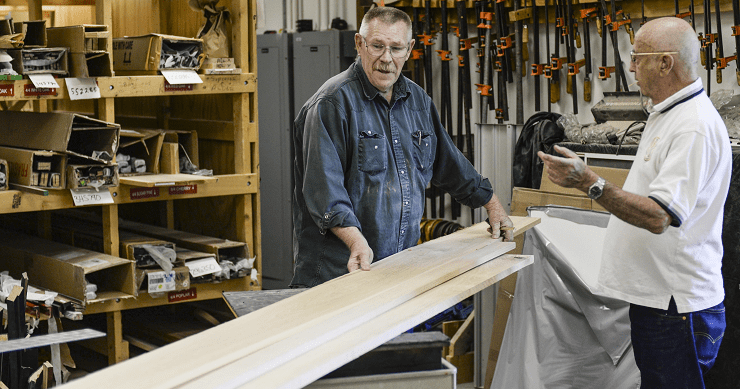A woodworking establishment is a facility where activities such as carpentry, cabinetry, furniture making, and wood crafting take place. The size of these establishments is critical for their functionality and efficiency, impacting workflow, safety, and productivity. Establishments vary in size from small workshops for custom projects to large-scale manufacturing plants. Larger spaces allow for multiple workstations and machinery, while smaller spaces require efficient layouts. The square footage also influences employee comfort and wellbeing.
Space is essential for efficient operation in woodworking establishments. It affects workflow, with ample space allowing for better organization and less congestion, leading to higher efficiency. Safety is also a concern, as sufficient space allows for effective implementation of safety measures and proper ventilation, reducing hazards and health risks. Productivity benefits from larger spaces, which provide room for specialized equipment and the potential for expansion.
The size of a woodworking establishment is influenced by the type of woodworking, the scale of operations, equipment needs, and future growth. Different woodworking types require varying amounts of space, and larger-scale operations typically need more room for machinery and storage. Equipment size dictates the floor space needed, and planning for future expansion is also important.
Woodworking establishments vary in size, with small-scale shops averaging 200 to 1,000 square feet, medium-scale shops ranging from 1,000 to 5,000 square feet, and large-scale operations exceeding 5,000 square feet. Case studies illustrate how establishments like ABC Woodworks and XYZ Carpentry Inc. choose their size based on factors such as cost-efficiency, client base, and expansion plans, with each facing unique challenges.
Efficient layout design is key to maximizing square footage and productivity. Organizing workstations in a logical flow and placing machinery strategically can improve workflow and safety. Storage solutions are also vital for organization and space utilization. Woodworking establishments face challenges like limited space for storage and expansion, impacting employee comfort and safety. To address these issues, creative storage solutions, reorganization, and alternative workspace arrangements can be beneficial.
In conclusion, the size of a woodworking establishment is vital for its success, influencing workflow, safety, and productivity. Factors to consider include the type of woodworking, scale of operations, equipment needs, and growth prospects. Efficient layout and storage solutions can help maximize space. Understanding these aspects is crucial for the long-term success of woodworking businesses.
Key Takeaways:
- The size of a woodworking establishment significantly influences workflow efficiency, safety, and overall productivity.
- Adequate space in a woodworking establishment allows for better machinery and material organization, contributing to a more effective production process.
- Woodworking establishments need to consider future growth prospects when determining their square footage to avoid costly expansions or relocations later.
“The size of a woodworking establishment has a profound effect on its workflow. Ample space allows for better organization and segregation of different tasks within the production process. A larger work area allows employees to move around freely, reducing congestion and enhancing efficiency.”
More details: here






